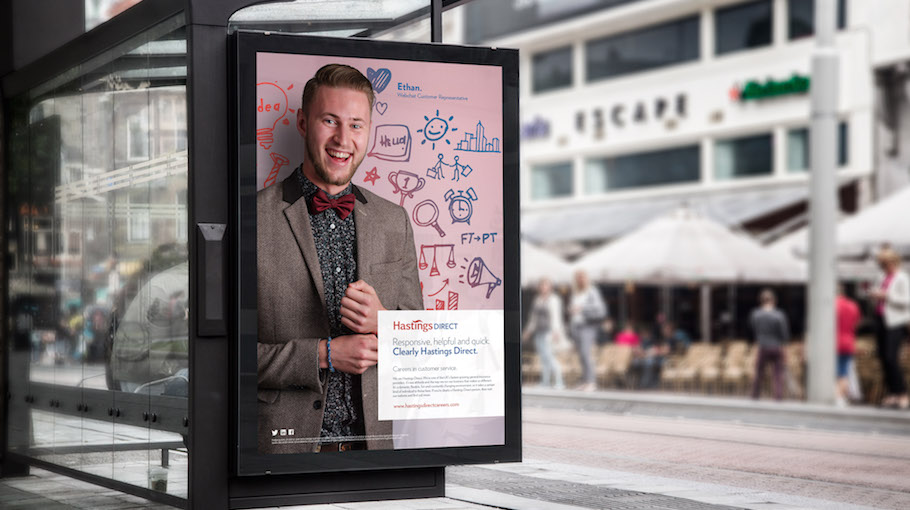In our last blog we put forward the business case for employer branding. I also babbled on a little bit about ducks and peacocks. The gist was get a positive employer brand and you’ll feel proud like a peacock, but should your reputation be less pristine, it could leave you feeling sad and withdrawn. Like a duck. I think I may have even promised to stop with the avian references. Well, maybe not quite. This time we’re looking at measuring your employer brand and the impact of your activity.
Developing your employer brand is all very well. But unless you can demonstrate how successful your efforts have been, how do you know it has been worth the effort. Yes, it’s nice to have a shiny new careers site, maybe even win an award – but it all has to pay for itself, right? And won’t your HR Director want to see some tangible results? Yes. Right again.
What’s the point of measuring your employer brand?
So now it’s time to get your ducks in order and get some employer branding metrics in place. There’s a well-worn quote from Peter Drucker that “You can’t manage what you can’t measure.” But what to measure? It’s true, the positive impact that marketing has on your brand has always been a notoriously difficult thing to measure. Thankfully, working in talent acquisition we do have some hard, measurable metrics that we can report against. After all, we’re not selling cans of cola, we’re putting great talent into great jobs.
It’s time to put your marketing hat on. When a new product or service is launched attracting and retaining new customers is an on-going process, not a one-off spend. Your employer brand is there for the long run too and, just like any marketing campaign, it needs to be nurtured as it evolves and grows. And in this case, it’s your current and future talent who are the customers.
So, you need to know what’s working in order to refine the process and justify the investment within the business. For this you need measurement data.
Measuring your employer brand
Every organisation is different and the choice of what you measure needs to be tailored to what is relevant to your business. In my experience, these are the top seven metrics you should be looking at:
1. Reduced cost-per-hire
A good place to start – demonstrate success in reduced costs, what’s not to like? Pull together all your recruitment costs from your external media and agency costs to your internal resourcing costs. Then divide them by the number of new recruits. A decrease in the cost-per-hire over time would suggest your employer brand is working.
2. Increased quality-of-hire
There’s no point in spending less on recruitment if you’re not attracting the right quality of candidates. By determining the productivity and profit contribution of current employees, you’ll be able to work out what an improvement from new hires will look like.
3. Reduced time-to-hire
An unfilled vacancy can be a problem. There’s the loss of productivity, not to mention frustrated hiring managers. So, reducing the time it takes to hire shows a good return of your investment for the employer brand – and will win friends inside the business too. You need to measure the time between the moment your hire entered your recruitment process and the moment they accepted your job offer. The next metric will help reduce this time period.
4. Increased size and engagement of your talent pool
Your employer brand should encourage more speculative applications and a good candidate experience will keep candidates engaged and more open to an approach. A good careers website and applicant tracking system will help. You can take a baseline number of current candidates as a start-point and measure growth in this number and those you subsequently hire from it.
5. Increased retention, reduced turnover
Evidence of both will suggest your employer brand is working. Measure how many employees stay and leave each year and if the average length of service is going up. In particular, look out for areas that are difficult to fill and retain. If retention rates are up here, that’s powerful evidence that your activity is working.
6. Increased employee referrals
Employees love talking about a great place to work – which means they tell their friends and professional network. What’s more, there are hardly any attraction costs when they apply. So start by understanding the number of employee referrals you receive and see if you can detect an increase once your employer brand strategy is implemented.
7. Increased customer advocacy
I started by mentioning marketing – and here’s another reason why. Measuring your employer brand isn’t just about HR metrics. Recruiting and retaining the right people for your organisation increases their productivity and employee engagement – and it’s not lost on your customers. So ask for customer feedback on employee performance. There is a reason that Sir Richard Branson believes that, “If you look after your staff, they’ll look after your customers. It’s that simple.”
If you feel that you’d like some help, support or even a little chat around defining your employer value proposition, developing your employer brand or any aspect of your talent attraction strategy just drop us a line. After all, much of our best work has started with a cup of tea and a biscuit.


